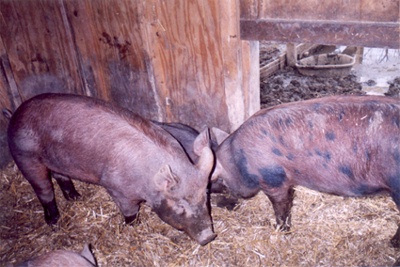All Nonfiction
- Bullying
- Books
- Academic
- Author Interviews
- Celebrity interviews
- College Articles
- College Essays
- Educator of the Year
- Heroes
- Interviews
- Memoir
- Personal Experience
- Sports
- Travel & Culture
All Opinions
- Bullying
- Current Events / Politics
- Discrimination
- Drugs / Alcohol / Smoking
- Entertainment / Celebrities
- Environment
- Love / Relationships
- Movies / Music / TV
- Pop Culture / Trends
- School / College
- Social Issues / Civics
- Spirituality / Religion
- Sports / Hobbies
All Hot Topics
- Bullying
- Community Service
- Environment
- Health
- Letters to the Editor
- Pride & Prejudice
- What Matters
- Back
Summer Guide
- Program Links
- Program Reviews
- Back
College Guide
- College Links
- College Reviews
- College Essays
- College Articles
- Back
Losing Farmland MAG
Theloss of farmland is approaching 11,300 acres per day, which is having a drasticeffect on America's farmers. In 1999 there were an estimated 77.1 people persquare mile in America. With all these people, where does the food to feed themcome from? It should come from our farmers and ranchers, but with dwindlingfarmland, the amount of food produced may decrease, making market pricesskyrocket.
Farmers and ranchers are rapidly disappearing in the Rockies.According to the U.S. Department of Agriculture, between 1978 and 1997 almost 1.9million acres of farmland were lost to other uses in the Tri-River region. Alongthe Front Range and other areas of the Western Slope in Colorado, growth and thehigh value of land for development are clearly the driving forces. Eastern plainspopulation pressure is not an important factor, but problems related toprofitability and business financing are. Growth will occur in eight DenverCounty metropolitan areas, where 2.2 million people live, but smaller countiesalong the Front Range and Western Slope are also experiencing theboom.
Key development land protection programs address factors such aseconomic development, and educating land owners. State and local governments havetaken the lead in protecting farmland for more than 40 years. Since the 1970s,state and local government and non-profit organizations have been helping farmersand ranchers develop new products, processing facilities, and service andmarketing strategies to increase profits. States are also helping by providingproperty tax relief. Farmers say the best way to protect the land is to ensurethat farming is profitable.
Building and maintaining a strongagricultural economy is just as important to the viability of farmers andranchers. Growers that market agricultural products directly to the customersusually receive a higher price than farmers and ranchers who sell their productswholesale. Local communities apply comprehensive land use planning andfarm-friendly zoning ordinances to control the growth in agricultural areas;farmers and ranchers who own land adjacent to growing cities can earn up to$100,000 an acre, depending on location, how anxious a city is to grow, and theeconomy.
According to the U.S. Census Bureau, the U.S. population isapproximately 281 million. Of that, the urban population is 187.1 million, ruralis 61.7 million, and the farm population is 3.9 million.
The AmericanFarmland Trust has been examining the impact of growth and changing land usepatterns on the future of agricultural land in western Colorado. Research sharedwith local and state officials helped strengthen land protection policies.
For most of our history, agriculture was the foundation of localeconomies. Cattle raising in the 32 counties comprising Colorado's mountainregions contributes to one-eighth of the state's total agricultural output, andemploys one of every five agricultural workers in the state. Animals that farmersand ranchers produce not only give us meat and other edible products, but manyinedible by-products. Animal hides are turned into leather, and some animals'skins can be grafted to humans with skin problems. Other products that many of ususe (and wouldn't think come from animals) include facial soaps, cosmetics,buttons, china and film. Some of the strange by-products from animals include pigheart valves, pigskins, hair and feathers. Probably the most familiar by-productis milk. In 1995, there were approximately 9.5 million cows, each producing16,400 pounds of milk.
If Americans enjoy all these benefits from theanimals that farmers and ranchers raise, why do they continue to decrease theamount of farmland? There needs to be a stop to growth in these areas, and morepublic awareness of how decreasing farmland affects the lives of all. This isn'ta huge issue yet, but why should we let it get to the point where it is? By then,we won't be able to turn back.

Similar Articles
JOIN THE DISCUSSION
This article has 1 comment.

0 articles 0 photos 12292 comments